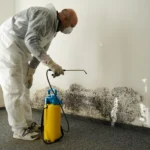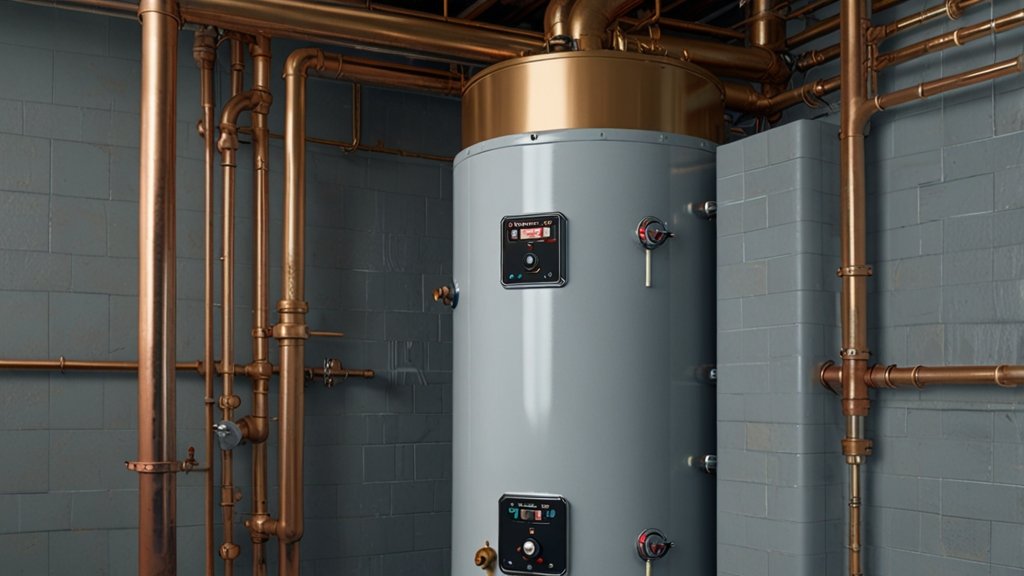Key Takeaways
- Proactive maintenance and everyday care can add years to a water heater’s service life.
- Routine attention helps prevent breakdowns, leaks, and costly replacements.
- Recognizing symptoms of trouble early keeps repair costs and disruption to a minimum.
- Simple upgrades and energy-conscious choices make a real difference in efficiency and financial savings.
- Utilizing expert resources and practical know-how puts homeowners in control of their water heater’s future.
Table of Contents
- Why Water Heater Lifespan Matters
- Routine Maintenance You Can Do Yourself
- Spotting Early Signs of Water Heater Problems
- Smart Upgrades for Long-Term Savings
- When to Call a Professional
- Energy Efficiency and Your Water Heater
- Tips from Plumbing Experts
- Final Thoughts
Why Water Heater Lifespan Matters
A dependable water heater forms the backbone of daily routines in any home, quietly ensuring a consistent hot water supply for showers, cooking, cleaning, and laundry. Although most water heaters are built to last around eight to twelve years, there is significant potential to extend this lifespan through deliberate care and thoughtful oversight. The inconvenience and cost associated with an unexpected water heater failure can be staggering, often resulting in cold showers and potential property damage due to leaks. By investing time in water heater service Monroe and following best practices for maintenance, homeowners can transition from reactive crisis management to proactive asset protection.
The financial implications of water heater upkeep are also notable. According to the U.S. Department of Energy, water heating alone can account for between 14% and 18% of domestic utility expenses, making it one of the largest energy consumers in the typical American household. When a water heater is functioning efficiently and free from sediment buildup, it uses less fuel (gas or electricity), further controlling monthly costs. Routine inspections and timely repairs do more than keep water warm; they ensure the appliance’s energy usage remains steady as years go by. With intentional effort, households not only sidestep expensive repairs but also enjoy continued comfort and peace of mind.
Routine Maintenance You Can Do Yourself
Contrary to popular belief, basic water heater maintenance does not require specialized training. Regular maintenance, completed even twice a year, can have a dramatic impact on both efficiency and overall function. One of the most effective DIY tasks is flushing the tank to remove sediment. Over time, mineral deposits from hard water settle at the tank’s bottom. This buildup can lead to overheating, strange noises, and ultimate inefficiency or internal corrosion. Draining a few gallons two times per year reduces this risk significantly. Additionally, lowering the heater’s temperature to a moderate 120°F helps guard against scalding injuries and relieves stress on heating elements and tank lining, contributing to improved longevity.
- Always maintain a safe, clutter-free zone around the heater for ventilation, safety, and easy inspection.
- Periodically check all fittings, valves, and pipe connections for leakage or signs of moisture.
- Monitor for unusual sounds such as rumbling or thumping, often indicating sediment buildup or internal wear.
Another worthwhile habit is inspecting and manually testing the pressure relief valve annually. This safety feature is designed to open automatically if pressures or temperatures reach unsafe levels, potentially preventing tank bursts. All it takes is lifting the lever, ensuring water flows out, and stopping completely when released. These easy steps are recommended by most manufacturers and are proven by research and field experience to ward off common causes of catastrophic tank failures.
Spotting Early Signs of Water Heater Problems
Vigilance plays a key role in water heater care. Problems often start quietly, but early action makes correction much easier. Homeowners should regularly observe any decrease in hot water output, especially if previously sufficient capacity is no longer meeting household demands. Cloudy, rusty, or metallic-tasting water from the hot tap frequently signals rusting or failing sacrificial anodes. Collecting beneath the heater within the tank is never to be dismissed, as it may be symptomatic of valve malfunctions, loose connections, or advanced tank corrosion. Noises such as popping, crackling, or rumbling during operation are similarly telling; they usually result from water trapped beneath layers of hardened mineral sediment.
As detailed in the Popular Mechanics guide to troubleshooting water heaters, minor issues can rapidly become major if left unchecked. For example, a faint corrosion mark on a valve today might mean a slow leak—and eventual water damage—tomorrow. Acting on these early signs ensures safety, prolongs equipment lifespan, and prevents waste and inconvenience.
Smart Upgrades for Long-Term Savings
Water heaters inevitably lose efficiency with age, but several smart upgrades can refresh performance or significantly extend useful life. Replacing the magnesium anode rod (which attracts corrosive minerals) can be used for tanks over six years old to reduce internal rusting dramatically. Adding foam pipe insulation or a water heater blanket reduces heat loss, saving energy, especially during colder months. Looking longer-term, households considering upgrades may opt for tankless models that provide hot water on demand, eliminating the need to constantly maintain a large volume of heated water. Heat pump water heaters, another innovative option, use ambient air to efficiently heat water, saving up to 60% on energy compared to traditional electric models.
When deciding between repair and replacement, weigh the increasing costs of parts against the anticipated efficiency gains of a newer, Energy Star-certified heater. Upfront investment in a modern system often pays for itself within a few years due to reduced energy consumption and fewer emergency repairs. Intelligent controls, digital thermostats, and leak detectors can enhance performance while providing convenient remote monitoring.
When to Call a Professional
Even for seasoned DIYers, some water heater issues are best left to certified professionals. Annual inspections go beyond surface-level checks, ensuring internal components, gas supply, and electrical wiring are up to code and not compromised by wear. Professional plumbers can replace sacrificial anode rods, diagnose failing thermostats, and address gas and electric safety hazards with qualified expertise. Additionally, persistent hot water shortages, recurring tripped circuit breakers, or repeated signs of leakage should always prompt a service visit.
Proper documentation of repairs, service calls, and installation dates simplifies decisions about eventual replacement. Professionals may use advanced diagnostic tools to test tank integrity, locate silent leaks, and measure electrical continuity—tasks that prevent disaster and extend the system’s natural lifespan. Because water heaters can feel intimidating, having a trusted service partner brings confidence that every phase of care, from inspection to complex repairs, is handled properly.
Energy Efficiency and Your Water Heater
Any plan to extend water heater life should include steps to maximize energy efficiency. The first, often most overlooked, is verifying the thermostat setting; 120°F protects against unnecessary heating costs and accidental burns. In addition, adding foam insulation sleeves to exposed hot water lines slows heat loss dramatically, especially if the heater is in an unheated area. Wrapping an older tank with a specialized “water heater blanket” is a small upfront investment that can result in annual energy savings between 7% and 16%, with the highest benefits in cool climates.
Upgrading an outdated or inefficient unit also enhances efficiency. ENERGY STAR-rated units deliver reliable hot water using state-of-the-art insulation and heat capture technology. As water heaters account for such a substantial share of home energy use, tweaks to efficiency translate directly into tangible savings on utility bills and less strain on heating components.
Tips from Plumbing Experts
- Set a yearly reminder to conduct a “mini-inspection” and sediment flush, making maintenance part of your seasonal or annual home routine.
- If you live in a region with hard water, install a water softener. Softening the water means less mineral buildup, which leads to smoother heating and reduced tank corrosion.
- Allow at least two feet of clearance around every water heater. This will facilitate future professional access, air flow, and visual inspections.
- Label the installation date clearly on the tank to keep track of service life and anticipate when replacement might become necessary.
- Read your user manual and register your water heater if possible. Manufacturer information can uncover model-specific maintenance steps, warranty details, and troubleshooting advice.
These insights reinforce that most water heater failures are preventable. Consistency is key: performing small actions regularly fosters reliability, ensures hot water when needed, and eliminates the stress of untimely surprise breakdowns.
Final Thoughts
In the background of every comfortable home, an efficient water heater does uncelebrated but invaluable work. With regular attention—from simple checks and sediment flushes to smart upgrades and timely professional advice—any homeowner can add meaningful years to their water heater’s lifespan. Each maintenance moment is an investment in peace of mind and future savings. From researching the best tips to knowing when to call in a qualified water heater service technician, empowered homeowners can confidently face whatever challenges hot water brings, ensuring the comfort and reliability their household deserves.
YOU MAY ALSO LIKE: End of Lease Cleaning in Mornington Peninsula: Ensure You Get Your Bond Back











